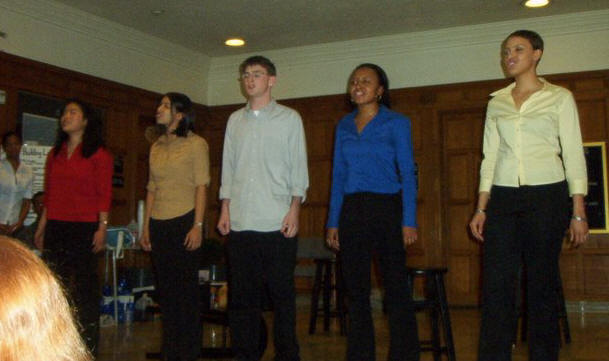
Roth, Bryan. 27 July 2011. "Facilities Management workers tend to an area outside the Allen Building to make sure recently planted trees get the water they need during July's intense heat." Duke Today. Accessed May 2012.
The Allen Building bears great significance as place of protest and as a site of memory for multiple acts of protest. The fact that it holds offices of administration members has promoted its use as a space of protest, which is symbolic as the demographic makeup of the administration often does not reflect that of the students who come to the building with demands.
Today, the Allen Building remains a site of protest. On January 24th, 2012, the Black Students Association (BSA) marched to the building and presented administrators with a list of demands.
Commemorations to the Allen Building Takeover are usually not at the site itself. There is no memorial to the Allen Building Takeover within the Allen Building. Earlier this year, there was a photo exhibit outside Mary Lou Center that depicted the takeover, but no words accompanied it and it was temporary. Chronicle articles usually feature a story about the takeover on its anniversary. Not all students have heard of the takeover or are aware of its significance.
Significantly, in 2002 students defied this norm when they engaged in a “lock-in” at the Allen Building itself to memorialize the event. Dr. Brenda Armstrong, a takeover participant, came to speak to the students. This significant acts of memorialization at sites of memory – like this one – may be part of the reason the identity of the Allen Building as a site of protest is still such an active one.
Pictures of the Allen Building Takeover were present outside the Chapel when President Brodhead spoke to students during MLK weekend this February (2012), which is both black history month and the anniversary month of the takeover. However, whether the University enacts more significant memorials or enough commemoration of this event to get knowledge about it into the local collective memory “remains to be seen” (Turner Interview). Chanelle Croxton, a Duke senior, believes it is up to the student body to speak up for long-term reform.



